Avgolemono Soup
- By Jennifer Segal
- Updated August 22, 2025
- 220 Comments
- Leave a Review


This post may contain affiliate links. Read my full disclosure policy.
Avgolemono is Greek comfort at its finest—lemony, silky, and so much more than your usual chicken soup.

Every culture has its favorite chicken soup—from classic American chicken noodle soup to cozy Jewish matzo ball soup. In Greece, it’s avgolemono soup, a light yet satisfying blend of flavorful chicken broth, bright lemon, eggs, chicken, and rice. The name comes from the Greek words “avgo” (egg) and “lemono” (lemon).
This avgolemono soup recipe is surprisingly easy to make, with just one “cheffy” step: tempering the eggs. This process gently warms them to avoid scrambling and creates the soup’s signature creamy texture. Don’t worry—I’ve made it foolproof with a blender. Pair it with souvlaki and a fresh Greek salad for a satisfying meal.
“I couldn’t believe I wasn’t at a restaurant. This had the most delicious taste with the perfect amount of lemon. I’m in heaven!”
What You’ll Need to Make Avgolemono

- Chicken tenderloins or breasts: Adds protein and heartiness. If using chicken breasts, you’ll need to cut them into 1-inch strips before cooking.
- Chicken broth, fresh dill, bay leaf & white pepper: The broth is what ties everything together; dill adds a fresh herby lift and gives the soup a familiar Greek flavor, bay leaf brings subtle earthy depth, and white pepper gives gentle heat.
- Long grain white rice: Bulks up the soup; a portion gets blended in to thicken the broth and keep it silky. Although rice is traditional, some people swap in orzo for a different twist—just keep in mind it cooks more quickly, so you’ll need to adjust the timing.
- Fresh lemon juice, eggs & egg yolks: The heart of avgolemono—eggs whisked with lemon make the broth creamy and rich, while the yolks add extra body.
- Heavy cream: Though not traditional in avgolemono, cream enriches the broth and helps soften the lemon’s acidity. Feel free to omit it for a more lemon-forward version.
- Jump to the printable recipe for precise measurements
Step-by-Step Instructions
Step 1. Season the chicken. Place the chicken on a plate, sprinkle with salt, and let sit for 15 minutes.
Pro Tip: Salting the chicken ahead of time isn’t just about flavor—it also helps the meat retain moisture so it stays tender when it poaches in the broth.

Step 2. Start the soup base. In a large pot, bring the broth, rice, white pepper, dill sprigs, and bay leaf to a boil. Reduce the heat, cover, and cook until the rice is al dente, about 5 minutes.
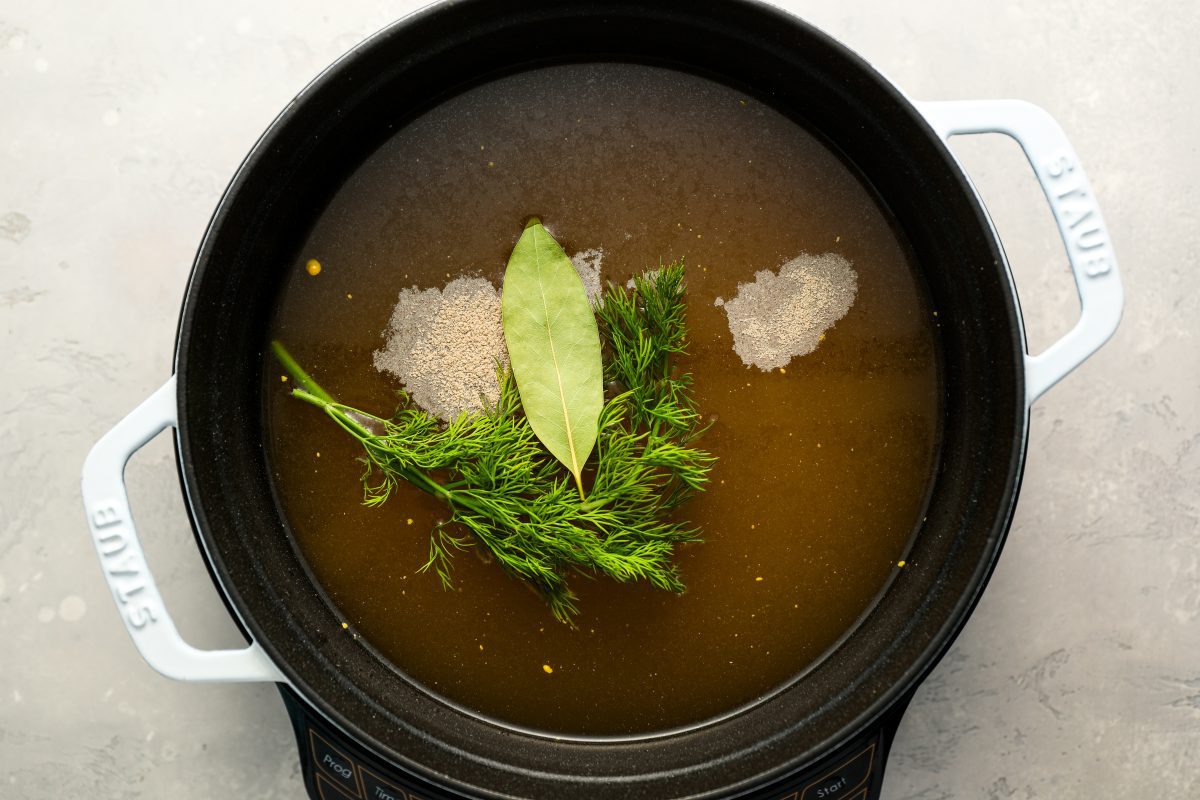
Step 3. Add the chicken. Remove the pot from the heat, add the chicken, cover, and let sit until cooked through, about 15 minutes.
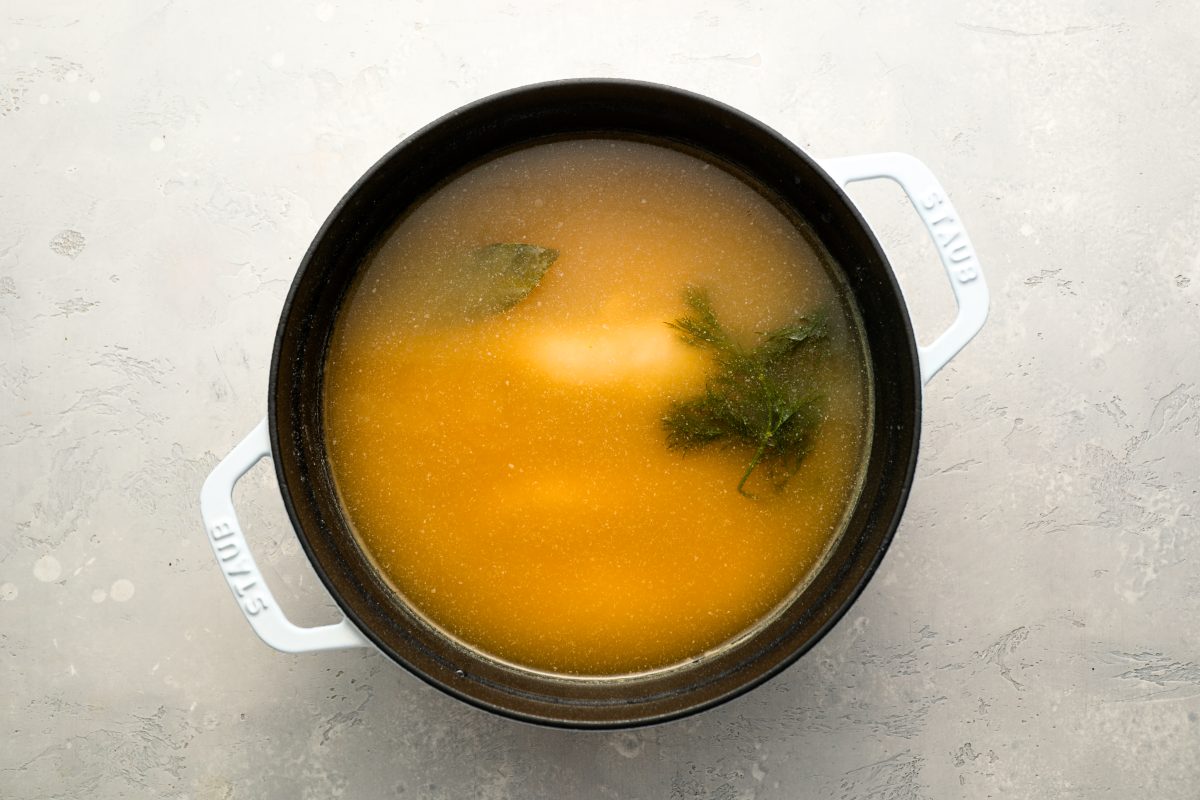
Step 4. Chop the chicken. Discard the dill sprigs and bay leaf. Transfer chicken to a cutting board, cool slightly, and chop into bite-sized pieces.

Step 5. Make the egg-lemon mixture. Blend ¾ cup of rice with the lemon juice, eggs, and yolks until smooth. Add ¾ cup broth, blend again, then repeat with another ladle of broth.
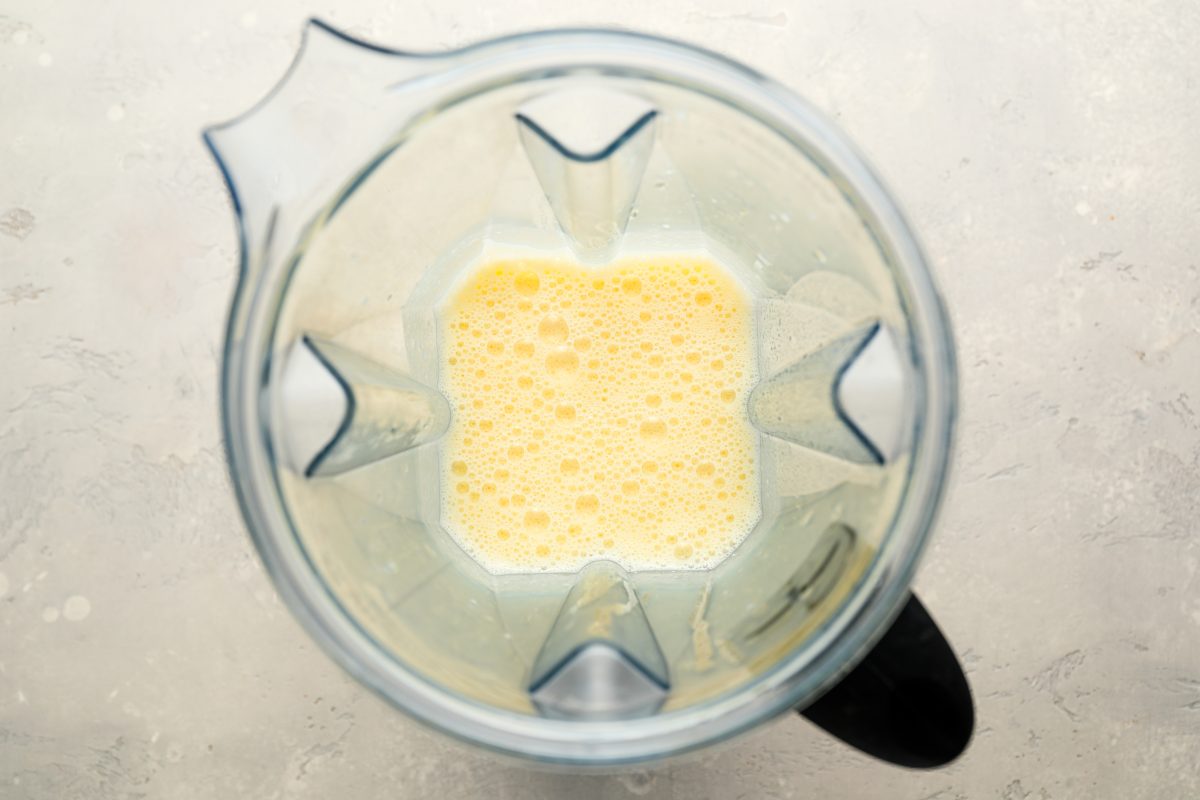
Step 6. Finish the soup. Stir the egg mixture slowly into the hot broth , add the cream, and gently simmer over low heat until the rice is tender. Just before serving, stir in the chopped dill and chicken. Serve right away, since the soup thickens as it sits. Refrigerating or freezing the soup can affect its texture, so, for best results, enjoy the soup fresh.

Video Tutorial
More Greek Recipes You May Like
Avgolemono Chicken Soup with Rice

Ingredients
- 1 pound chicken tenderloins (or chicken breasts, cut into 1-inch strips)
- 1¼ teaspoons salt
- 8 cups chicken broth
- ¾ cup long grain white rice
- ¼ teaspoon white pepper
- 3 sprigs fresh dill, plus 2 teaspoons chopped (see note)
- 1 bay leaf
- 5 tablespoons fresh lemon juice, from 2 lemons
- 2 large eggs plus 2 large yolks
- ½ cup heavy cream, plus a bit more if necessary (optional; see note)
- Freshly ground black pepper, for serving
Instructions
- Place the chicken on a plate and season all over with the salt. Let sit for 15 minutes.
- Meanwhile, in a large pot, bring the broth, rice, white pepper, dill sprigs, and bay leaf to a boil over high heat. Reduce the heat to low, cover, and cook until the rice is al dente, about 5 minutes. Remove the pot from the heat, add the chicken, cover, and let sit until the chicken is cooked through, about 15 minutes.
- Discard the dill sprigs and bay leaf. Transfer the chicken to a cutting board, let cool slightly, then chop into bite-sized pieces.
- Using a slotted spoon, transfer about ¾ cup of the rice to a blender. Add the lemon juice, eggs, and yolks to the blender and process until smooth, about 30 seconds. Using a soup ladle, transfer about ¾ cup (180 ml) of the broth to the blender and process until smooth, 10 seconds (be sure to leave the hole in the lid open and cover with a kitchen towel to allow the steam to escape). Add another ladleful of broth to the blender and process again.
- Slowly pour the egg mixture into the pot, stirring until evenly combined. Add the cream and bring to a gentle simmer over low heat. Do not boil. (The soup will be a bit frothy at this point; don’t worry, the froth will settle as it simmers.) Taste the rice to see if it’s cooked through. If it needs a few more minutes, gently simmer the soup until the rice is cooked. Right before serving, stir in the chopped dill and the chicken, then taste and adjust seasoning, if necessary. If the soup is too lemony, add more cream. If the soup is too thick, thin it with a bit of water. Serve immediately, as the soup thickens up quite a bit as it sits.
Notes
Pair with
Nutrition Information
This website is written and produced for informational purposes only. I am not a certified nutritionist and the nutritional data on this site has not been evaluated or approved by a nutritionist or the Food and Drug Administration. Nutritional information is offered as a courtesy and should not be construed as a guarantee. The data is calculated through an online nutritional calculator, Edamam.com. Although I do my best to provide accurate nutritional information, these figures should be considered estimates only. Varying factors such as product types or brands purchased, natural fluctuations in fresh produce, and the way ingredients are processed change the effective nutritional information in any given recipe. Furthermore, different online calculators provide different results depending on their own nutrition fact sources and algorithms. To obtain the most accurate nutritional information in a given recipe, you should calculate the nutritional information with the actual ingredients used in your recipe, using your preferred nutrition calculator.
See more recipes:
Comments
Add a Comment Cancel reply
This site uses Akismet to reduce spam. Learn how your comment data is processed.

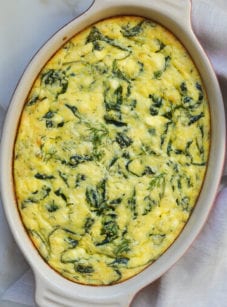



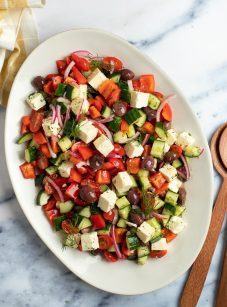
I made this recipe today! I used to work at a restaurant that always had this soup. I ate it all the time. This recipe is great. My only mistakes were that I should have trimmed out the tenders and didn’t cook the rice long enough – but it is still very good!
I loved this recipe. It brought me back to a small Greek restaurant my grandpa used to take me to. I would suggest to anyone cooking this recipe to make sure you get the long grain rice and even use more lemons / less cream if you love lemons! I think I added more cream than I would have.
I loved this recipe. It brought me back to a small Greek restaurant my grandpa used to take me to. I would suggest to anyone cooking this recipe to make sure you get the long grain rice and even use more lemons / less cream if you love lemons! I think I added more cream than I would have. Beginners problems!
I’ve seen this item on menus in Greek restaurants, but never made it. It was easy to make, and has a nice flavor, but to be honest, it just wasn’t what I thought it would be. I think next time I would add some carrots/onions or even broccoli or chopped spinach. It just seemed to be missing something, but since I’ve never had it before, don’t know if there’s a right or wrong way to do it!
This recipe is a nice twist to a traditional Greek Lemon Soup. I really enjoy the incorporation of chicken because it adds protein which isn’t common in the traditional soup. I also like the soup quite lemony, so I doubled the lemon and did not put the cream in because it’s already creamy in nature. The dill also added some unique flavor which I really enjoyed, but I only put the springs in when simmering the broth and did not chop up any additional dill to put in when serving! A very strong new recipe 🙂
This recipe was popping with flavor! So smooth and creamy! We enjoyed it so much and I will be making this again for sure!!!
Very easy to make and love the subtle flavor of the lemon and dill!!
The wet and blustery weather put me in the mood for a warm, comforting, creamy soup. This avgolemono was the perfect choice! It came together easily and the step by step instructions made it a snap to make. The flavors are simple, but the lemon and dill kick it up a notch, from a standard creamy chicken soup. We added a generous sprinkling of crumbled feta on top and a drizzle of chili oil for some heat. I paired it with a cucumber avocado salad with greek vinaigrette and warm naan bread for dipping.
This avgolemono was the perfect winter warmer!! We will definitely be adding this to the recipe rotation.
Delicious and easy to make. I made this soup twice in the last week exactly as written. I wouldn’t change a thing. I shared it with a friend of mine, saying that I could simply drink the broth. Another winner from my favorite chef!
This soup was great! I enjoyed this soup a lot spending time in Greece and this rivaled the avgolemono I had there. We left out the heavy cream as we prefer a tarter avgolemono and did not miss it. Jenn is right – make this meal whenever you are wanting something bright to eat during the winter months!
This soup is delicious and very easy/quick to make. I will make 2 changes next time: 1) eliminate the heavy cream because think the soup is silky and tastes wonderful before the cream is added and 2) decrease the amount of chicken – one pound was a bit too much for our liking.